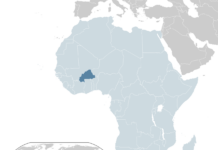Researchers have unveiled a new species of anaconda in the Amazon rainforest, potentially the largest snake in the world. This revelation, detailed in recent studies and expeditions, not only expands our understanding of biodiversity but also brings to light the intricate balance of ecosystems and the pressing threats they face.
The new species, named the northern green anaconda (Eunectes akiyama), was identified during a collaborative expedition between scientists and the indigenous Waorani people in Ecuador’s lush Amazonian territories. Measuring an astonishing length of up to 20.7 feet, with anecdotal evidence suggesting individuals could reach up to 24.6 feet and weigh around 1,100 pounds, this species surpasses the previously known green anaconda in size, challenging the reticulated python for the title of the world’s longest snake.
This discovery is the result of a meticulous genetic analysis revealing a 5.5% genetic divergence from its closest relatives, indicating a separation that occurred nearly 10 million years ago. Despite this considerable genetic gap—remarkably, humans and chimpanzees differ by only about 2%—the northern green anaconda shares a nearly identical appearance with its southern counterpart. This genetic distinction was unexpected and emphasizes the complexity of anaconda species differentiation, shedding new light on their evolutionary history.
The research conducted in the Amazon goes beyond cataloging new species; it serves as a critical indicator of the ecological health of one of the planet’s most vital and vulnerable ecosystems. Anacondas, being apex predators, play a crucial role in maintaining the balance of their habitat. Their presence and condition can signal the health of the broader ecosystem, making them key species for conservation efforts.
However, this discovery also highlights the dire threats facing the Amazon, such as deforestation, oil spills, and climate change. The anacondas themselves have been found to accumulate heavy metals from oil pollution, posing not only a risk to wildlife but also to human communities, particularly affecting indigenous peoples who rely on these ecosystems for sustenance and cultural practices. The contamination warns of the broader environmental impacts of unchecked industrial activities and the urgent need for sustainable management and conservation strategies.
The implications of this discovery extend beyond the academic sphere. It underscores the importance of collaboration with indigenous communities, who possess invaluable knowledge and understanding of their ancestral lands. Such partnerships are essential for the conservation of biodiversity and the protection of ecosystems against the encroaching threats of modernization and exploitation.
As the world grapples with the challenges of environmental degradation and biodiversity loss, the discovery of the northern green anaconda serves as a potent reminder of the wonders that remain hidden within the Earth’s remaining wild places. It calls for a concerted effort to preserve these habitats, not only for the sake of the species that inhabit them but also for the future of humanity. By safeguarding the Amazon and its denizens, we protect the intricate web of life that sustains the planet, ensuring a resilient and vibrant world for generations to come.






